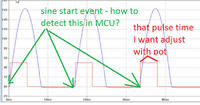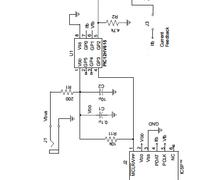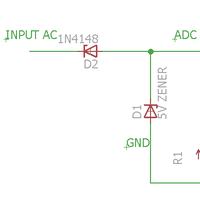Alloy
Advanced Member level 4
Hello.
I want to read a 50Hz signal from AC transformer (only upper halfwave) and use it to generate square signal.
The output square signal should be preferrably at 5V level.
Please take a look at the picture:

The blue signal is the signal that I want to read.
The red signal is the signal that I want to generate.
Both signal must be synchronized.
My question is: what cheapest and simplest MCU can I use for this purpose?
I want to read a 50Hz signal from AC transformer (only upper halfwave) and use it to generate square signal.
The output square signal should be preferrably at 5V level.
Please take a look at the picture:

The blue signal is the signal that I want to read.
The red signal is the signal that I want to generate.
Both signal must be synchronized.
My question is: what cheapest and simplest MCU can I use for this purpose?



